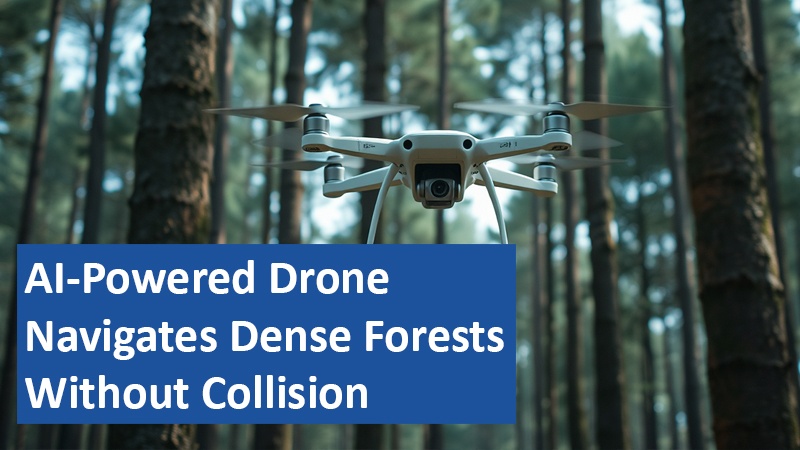
A new drone developed by researchers at the University of Hong Kong has demonstrated groundbreaking capabilities, navigating dense forests at high speeds without crashing. The “Super Micro” drone is equipped with artificial intelligence and advanced sensors, allowing it to detect and avoid obstacles with extreme precision. This technological leap could transform search and rescue operations, environmental monitoring, and infrastructure inspections. However, its ability to autonomously navigate complex environments has also sparked concerns over potential military applications.
Find top-rated products on Amazon today!
Cutting-Edge Sensors and AI Navigation
The “Super Micro” drone measures 28 centimeters in diameter and can maneuver through tight spaces at speeds exceeding 45 mph. It achieves this through an advanced 3D LiDAR system, which enables it to scan its surroundings and react instantly to obstacles such as trees, branches, and even thin cables. LiDAR technology uses laser pulses to measure distances with extreme accuracy, allowing the drone to detect objects as small as one centimeter from up to 230 feet away. Impressively, it can even identify a 0.1-inch wire stretched between two trees—comparable to the thickness of a guitar string.
Dual-Trajectory Flight System
One of the drone’s most remarkable features is its AI-driven dual-trajectory flight system. The onboard AI simultaneously calculates two possible flight paths—one optimized for speed and the other for maximum obstacle avoidance. This allows the drone to make split-second adjustments and navigate safely through dense environments, a task nearly impossible for a human pilot to replicate. Unlike traditional drones, which rely on pre-programmed routes or manual control, the Super Micro makes real-time decisions, enabling it to fly smoothly in unpredictable settings.
Potential Applications and Ethical Concerns
In addition to its high-speed navigation, the drone can operate effectively in total darkness using only its LiDAR system. While researchers emphasize its potential for life-saving missions, such as emergency response and disaster relief, concerns are growing about its use in surveillance or even military operations. The ability to autonomously navigate dense terrain at high speeds raises ethical questions about the future of AI-powered drones.
The Super Micro drone represents a significant advancement in autonomous navigation, with potential applications in rescue missions, environmental monitoring, and infrastructure inspections. However, its ability to navigate dense terrain at high speeds also raises ethical concerns about its use in surveillance or military operations. As AI-powered drones become more sophisticated, the need for clear regulations and responsible deployment will be crucial.
As autonomous drone technology advances, should there be regulations to limit its use in sensitive applications? How do you see AI-driven drones shaping future industries? Share your thoughts in the comments.
Based on content from www.futura-science.com and own research.